What does MVP mean in software development? Definition & Guide to create a powerful product.
This article will help you to determine the matter of MVP in product development and why it is a vital stage for any startup.
Maria Shapovalova
January 18, 2022
16 min read
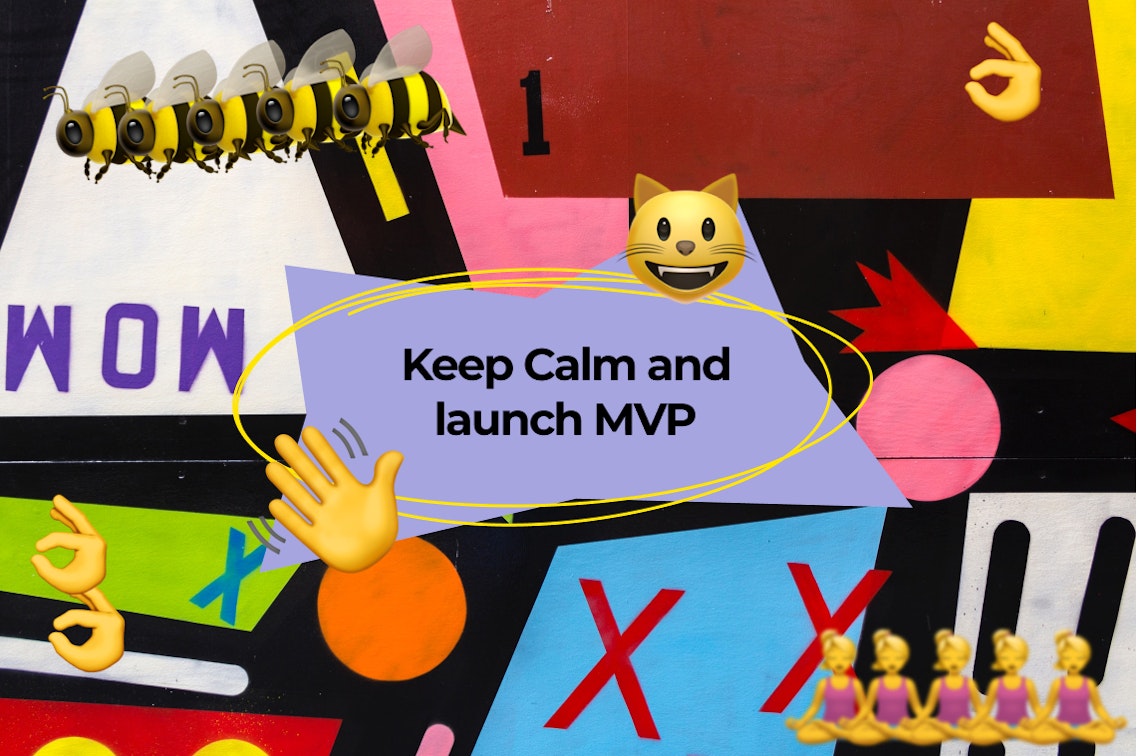
Creating a minimum viable product (MVP) to test a business model is probably the most popular startup launch method. World-famous companies like Uber, Dropbox, Figma, and Slack started their journey to unicorn status with MVPs. In this article, we'll talk about what does MVP mean in software development, what stages are involved in creating an MVP product, what to do after MVP software development and many other things that will help you build an MVP. Let’s start by understanding the MVP meaning.
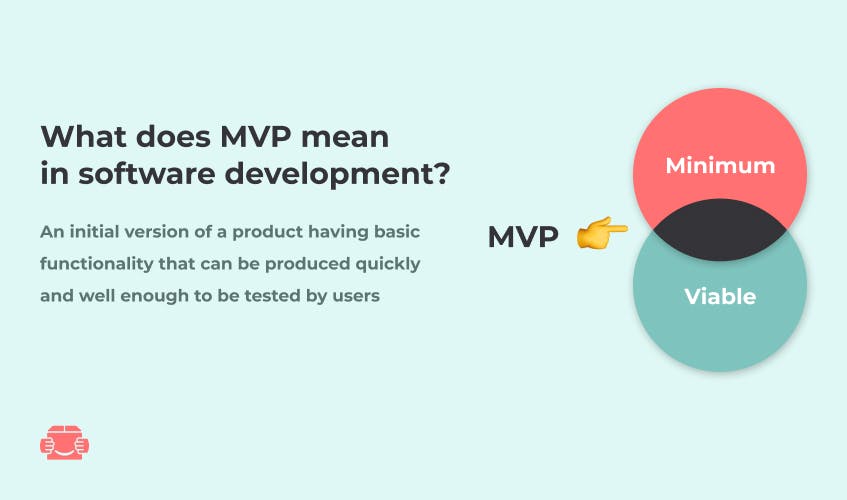
Minimum Viable Product (MVP) Definition: What Does MVP Mean in Business?
The first question to ask is what does MVP stand for? MVP stands for a minimum viable product, but we have to delve deeper to understand what exactly this means. According to a study by CB Insights, 42% of startup failures are caused by a lack of market demand. In almost half of the cases, entrepreneurs spend months or even years of work only to realize that the hypothesis was wrong and no one is interested in their product. For this reason, rolling out an MVP as fast as possible is crucial.
The 80/20 rule (otherwise known as the Pareto principle) claims that 20% of effort is responsible for 80% of results. The rule also implies that most of the effort goes off into the least efficient practices accountable for roughly ⅕ of the outcome.

Get your perfect MVP developed at Voypost
Are you looking for a way to enhance your software? There is an opportunity for you with MVP development. Start your MVP development with Voypost!
In software development, the rule is rephrased as follows: 20% of features satisfy 80% of user needs. For that reason, MVP developers always aim to define and include that desired 20%. And it exactly corresponds to the “minimum viable” conjunction: no more and no less than a regular user would need.
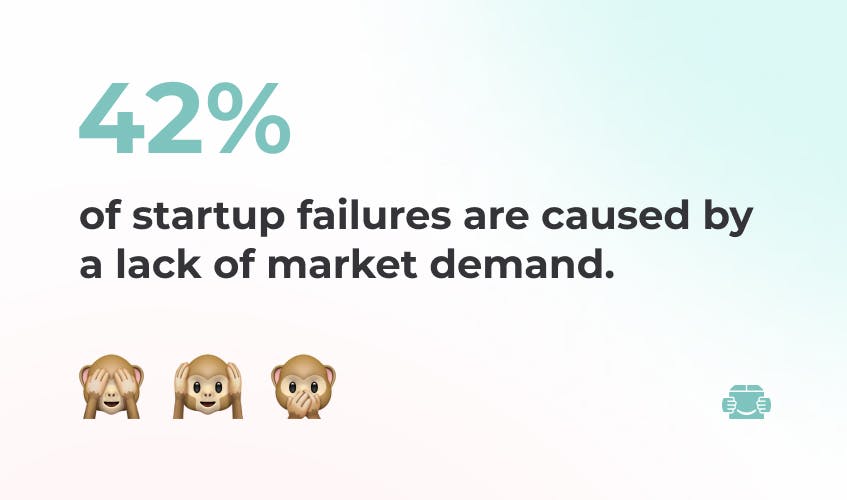
As we just mentioned, the right balance of features that make a product viable must be found.
It is a natural part of the product discovery phase:
Define a problem that a product will solve
Narrow down the target audience
Identify the main competitors
Carry out a SWOT analysis
Create a user journey map
Compile a list of MVP features
Proceed to mockup development and prototyping
Only then, using the prototype as a framework, it is possible to start working on the MVP.
What is MVP development for startups?
Now that we know what MVP stands for, the MVP meaning, and the steps that precede its development, let us take a closer look at a particular case of MVP development for startups. Is it always expedient? What special considerations must be taken into account? How to carry out the whole process smoothly?
MVP for startups is not essentially different from the one meant for large business entities. There are obvious differences in scope and budget but aside that, the preparation and development processes are the same. In order to save precious time and money, the founders who have no professional team at the moment might go for MVP development outsourcing rather than aiming to hire an in-house team.
Can any step of the discovery stage be skipped to cut the expenditures even more? Yes.
Startup founders don’t usually have a whole marketing department at their disposal. If they come up with a unique idea, they don’t have potential competitors for the startup MVP either. And if they have a working prototype that needs one last professional touch before engaging investors, it means that the step of feature backlogging has likely been dealt with already.
In other words: it doesn’t matter if a startup founder has only a rough draft of the product they intend to build or a well-documented prototype backed by a sound strategy. They can always address an MVP development company and benefit from it, even more so if they choose an offshore company. The said company’s team will compensate for the lack of experience, if necessary, break the MVP development process into stages, explain every stage, and describe the incremental deliverables that mark out the end of each stage. Certain companies also allow their clients to hire the specialists that have been working on their MVP as regular team members, for further work on the product.
The bottom line: every startup is unique in its own way, so the founders can find the best pricing conditions and talents only after interviewing and comparing at least 4-5 MVP development companies and receiving the quotes.
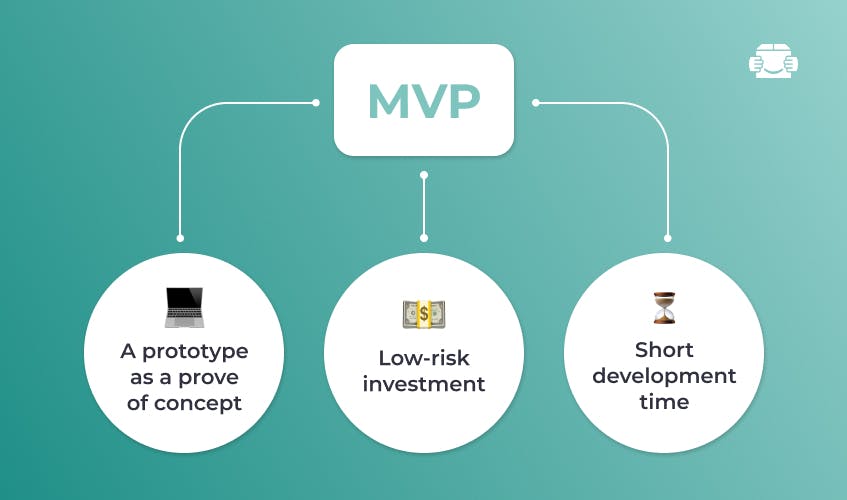
Is it True that MVPs are Just for Startups?
MVP development is perfectly fit for SMBs and large entities.
Don’t fall under the impression that MVP in startups is a special case as a cheap and fast solution. Speed-to-market matters for organizations of all sizes.
Keep the Pareto principle in mind: as you release a product with only 20% of the essential features, 80% of users have all they’ll ever need. It could be a mobile app MVP, a web or PC one – literally anything. The product immediately starts to generate revenue while the team keeps gradually adding the remaining 80% to cover the rest of the target audience in the meantime.
An MVP is needed for absolutely every service offering, regardless of the industry you are in. Whether you want to create apps like Klarna, movie apps like Netflix, apps like apps like Airbnb, the best solution for you would be to reach out to MVP development service representatives and create the MVP version first and then build on that.
So, yes, it is crucial for large businesses to roll out their MVPs early to start engaging more users. If competitors catch the user’s attention earlier, they may win the race in the long run.
Another invaluable advantage the businesses get when they roll out their MVPs early is user feedback. Users know what is best for them, so they will stir the development in the right direction. It is a win-win.
Similarly to startups, large businesses do not reject the advantage of cooperating with international MVP development outsourcing companies.
If you had a nearly unlimited budget and access to a global pool of talents, wouldn’t you be tempted to select the best team in the world there is?
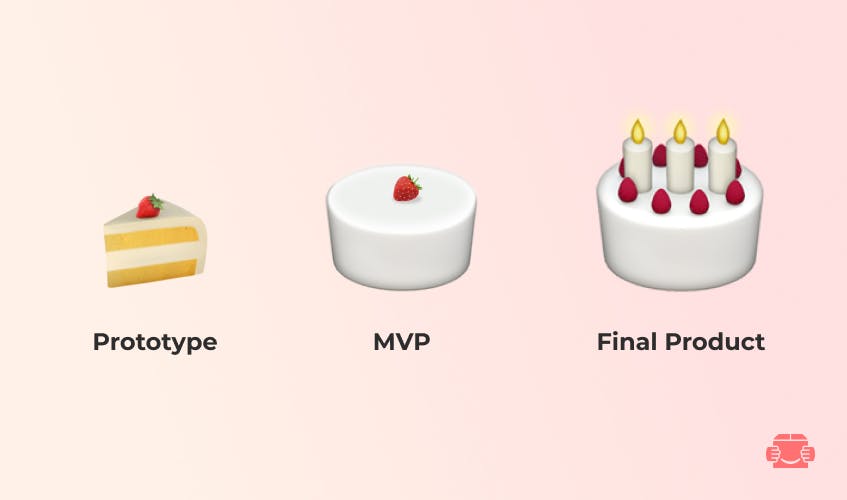
Features of a Great Minimum Viable Product
Spoiling the first impression might cost a founder their business. Here is a short outline of the features that highly boost the chances of a given MVP to succeed.
- Well Researched. Business Analysts and Internet Marketers professionally study the market sentiment, relevant Internet search entries, and the niche in general to refine the product idea and help the founder set the right priorities concerning the product features. The marketing analysis might not always be affordable though. Should that be the case, the founder has to be in close communication with the audience to be aware of their needs and expectations.
- Accessible and intuitive. The idea behind the product must be wrapped in an attractive and convenient interface. Just follow the best practices of UI/UX design. An MVP is not about barebone business logic; it is a readily usable application.
- Documented. Product documentation allows developers to revise their old decisions, track product evolution, identify repetitive problems, and pass on the knowledge to new team members, for example. Even the simplest format of documentation is better than none.
- Engaging. Good apps just do what they were meant to do. Great apps form a small community around them. Attach a higher meaning to your app. Make it clear which values the company pursues. Entertain the users with style. A short and catchy motto included in the MVP will be enough to let the users know if they would like to identify with it. And if they can – you gain their loyalty for a lifetime.
Correspondingly, design mistakes either lead to immediate failure or chronic underperformance throughout the app’s lifecycle.
MVP Design Mistakes
Each of the bullet points on this list is the opposite of the respective point above.
Out of touch with the audience. You risk adding unnecessary features or too many of them. Remember, the main idea of MVP is to implement only essential ones. Provide customers with a general understanding of the future product, and do not go headlong into the endless refinement of the product to an unattainable ideal! If a product does not solve user problems then neither design nor performance will save it, and resources will already be wasted.
Overloaded with controls or incomprehensible. Some apps just induce the feeling of helplessness as soon as users open them. The controls are not in the places where one expects to find them; more than seven control elements occupy the screen at the same time; complex actions are not divided into separate steps; the element grouping is illogical; the element sizes are disproportionate, etc. All of it makes users uncomfortable.
Absent or poor documentation (for internal use), no publicly available changelog (for users). If users can’t find an exhaustive list of features, they are not going to download an app merely to discover everything by themselves.
No product image. It is important to think about it ahead because radical image changes will cost you a fraction of the audience. Why does the image matter in the first place? Because people value the apps they can establish emotional connection. The apps that bring in the sense of belonging into their lives. If your MVP sticks exclusively to a certain utility, any competitor who adds a little bit of engaging elements, will stand out.
MVP Examples
MVP should convey the crux of the idea, which depends on the context. Accordingly, the minimum viable products vary depending on the project: from a one-page site to complex multi-purpose software. To better grasp this idea, let’s take a look at some minimum viable product examples.
In 1999, Nick Swinmurn decided to sell shoes online, so he needed a full-fledged site Shoesite.com. He started the business without any inventory, buying products for every order he placed. This gave him a low-risk opportunity to test his idea without spending money on restocking. Shoesite.com soon became Zappos, which Amazon acquired in 2009.
The creators of Uber put a little more effort into the implementation of their concept. Garrett Camp and Travis Kalanick were frustrated by the high taxi fares in San Francisco. In 2010, they launched UberCab, a simple iPhone app that allowed commuters to rent a limousine for only 1.5 times the cost of a city taxi. Initially, the project covered a limited area and was intended for a limited target audience. However, the beta version helped the creators convey the value of the idea and get the first major investment a year later.
7 Stages of Minimum Viable Product Development
To create a successful product, you need to invest enough time into product planning. First, make sure to follow basic principles and methods of MVP development. The team must follow them throughout the process. At the same time, strive to spend as little money and effort as possible.
There are several MVP development stages from testing an idea to turning it into a product. Let’s explore each of them in greater detail.
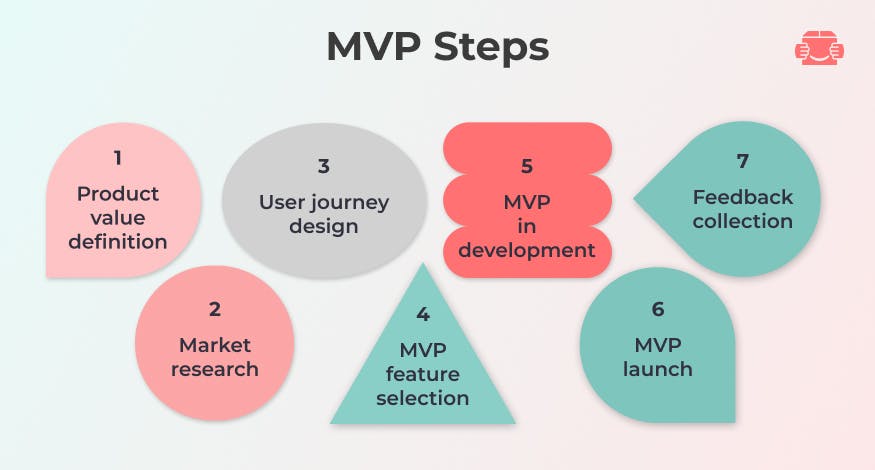
Stage #1: Product value definition
The first stage of MVP software development is a vague idea in the founder’s head that they can introduce something of value into society. All highly successful products in existence satisfy certain users’ needs, so value is their central trait, regardless of target platform or audience. Be it a mobile app MVP or a cutting-edgee 5G IoT application, a startup founder should never develop it based solely on their own interests or insights. The value of MVP in startups matters even more compared to established businesses because the former are usually unable to launch full-scale marketing campaigns.
Nonetheless, the founder’s own interest and problems do make an excellent source of motivation to turn their idea into a marketable product and carry on improving it after the release. The founder’s background is a great basis for the product image, too. It is the factor that unites users with similar interest and problems around the product, giving rise to a little loyal community, as discussed above.
What problem is this particular MVP going to solve? And why do you, as a founder, find this particular problem relevant to you?
Stage #2: Market research
The value of market research has been pointed out a couple of times in this article already: it is comparable to, say, optimizing your gambling strategy. Minimize the risks first, maximize the variety and quantity of possible rewards second.
There are incalculable techniques that different marketing specialists prefer to employ during their research. Plenty of them are conveniently described in flashy acronyms: SWOT, 4P, 7P, EEE, SMARTER, etc. And it is natural that marketers do not apply all of them at once.
Some others have no rigid methodology and are freely used by anyone – particularly those without the marketing expertise.
For example, online Mind Mapping tools provide the means to visualize and structure any set of ideas or actions, including a marketing strategy.
The Product Canvas is a lean startup template for validating new or clarifying existing lean product ideas. It is a visual chart with elements describing an MVP in startup – proposal, business hypothesis, metrics, features, personas, journeys, and schedule. It assists entrepreneurs in aligning their ideas with the underlying (minimum & viable) work to create and validate them. The Product canvas brings together elements of lean startup, design thinking, and business directions.
At his point, founders compare their vision of the product with the users’ and adjust accordingly.
Stage #3: User journey design
User journey mapping is a simple method for discovering potential problems users might encounter as they engage with the MVP. It’s a handy technique used by UX designers, marketers, and product managers to determine all the actions a user takes to reach an end goal.
The visualization of the user journey is the groundwork upon which the user interface will later be developed.
You would not only pay attention to the actions that the app is meant to perform but, to no lesser degree, the actions that it is not – which they also call foolproofing. The MVP has to be resilient against hacks and exploits, and demonstrate intended behavior whenever users unintentionally misuse it.
Stage #4: MVP feature selection
While companies may have a long list of features to include in an MVP, it’s critical to limit the number of features and focus on only what’s necessary to take the app to market. As a means of identifying the features that support an MVP’s core functionality, it’s important to start with answering these questions: what is the number one problem users are experiencing, and how will the functionality of the the MVP in development solve that problem?
This is where the 80/20 rule comes into play.
But prioritization gets tricky if there are multiple stakeholders of the product. Fair, interactive approaches must be applied. One of the possible techniques for determining the crucial features, among the others, is Priority Poker. On the other hand, one might partially delegate the decision concerning the MVP feature to the community and hold a vote among the most engaged members (e.g., kickstarter backers, patreon supporters, token holders, etc).
The optional steps are to prepare the product mockups (to engage users and investors prior to the release) and build a prototype.
Stage #5: MVP in development
This stage inevitably implies the selection of appropriate third-party vendors if the founder finds outsourcing MVP development reasonable. As soon as the team is ready to go, they rely on the mockups, prototypes, user journey diagrams, UML diagrams, and other documents obtained at the previous steps.
The team might come up with any number of product alpha versions to make the product immediately available to users and start collecting feedback at this stage. The common practice is to make alpha versions available to a limited number of most engaged users – for a certain incentive.
In the beta phase, the software is known as betaware. The team might provide access to an even larger group of users (referred to as beta testers). Beta testing is used to help track down software bugs, the general usability and performance, and also keep gathering suggestions concerning design or feature improvements.
Finally, the software becomes pre-release. At this point, the team may make the demo-version publicly available, announce the release date, and keep accepting pre-purchase orders with a discount.
All the way through development, the team should make use of manual and automatic means of software testing, either on individual scale or with the help of QA/QAA/DevOps departments.
Stage #6: MVP launch
As previously discussed, each startup is unique, and none of the steps have to be followed to the letter obligatorily. One MVP software development example may be notable for total absence of intermediary versions while another one, on the contrary, may include numerous alpha, beta, and pre-release versions.
One way or another, some kind of user feedback is necessary. At the very least, the team members themselves may act out as Product Owners and actively contribute their opinions during the pre-launch MVP software development.
The launch, however, is the culmination of all the work since the ideating stage. The team should be alert to take care of the spike of user activity. If no pre-release versions were available to the public, there might also be a lot of community-detected bugs immediately after the release.
It is also worth mentioning that Continuous Integration / Continuous Development practices and tools help to smooth out the release and the ongoing development, improving the app’s adaptability to market changes or community suggestions.
Stege #7: Feedback collection
Customer feedback is important for understanding the development direction of the MVP.
The customer-centric approach dictates that the user input is swiftly dealt with, assigned a higher priority than the stakeholders’ vision. So does the team behind the MVP have a Customer Support department?
Other than traditional customer support (the specialists who accept customer phone calls, emails, chat messages via the company’s website), there is an option to hire a single community manager (CM) who will simultaneously engage, entertain, and support the users via the suitable communication channel, also versatile in chat bot applications. Discord and Telegram are some of the popular platforms for that matter.
Chat bots are trending now, by the way. Although they do not entirely remove the need for human-to-human interaction, they efficiently take care of the most common user queries. Again, the 80/20 rule: let the bot answer the questions users come up with 80% of the time, leaving the remaining 20% to an expert. Think of it as an interactive FAQ, if the bot’s activity is limited exclusively to customer consultation. Established companies might give a look into state-of-the-art voice bots, like Google Assistant.
Finally, feedback collection is possible via user activity tracking and analytics. Judging on how much time they spend in various sections of the app, or what specific features they pay for more often, the team respectively adjusts the effort in further MVP development.
What Comes After the MVP Release?
MVP development is iterative, except that after a couple of major updates, the product ceases to be “minimal”.
Start from the very first stage anew, refine the product vision, increase the product’s exposure, expand the audience, add new features and improve the existing ones, secure significant partnerships, and stay true to the initially chosen values.
Developing a product MVP will help you save money and collect the necessary information to build an “optimal” product.
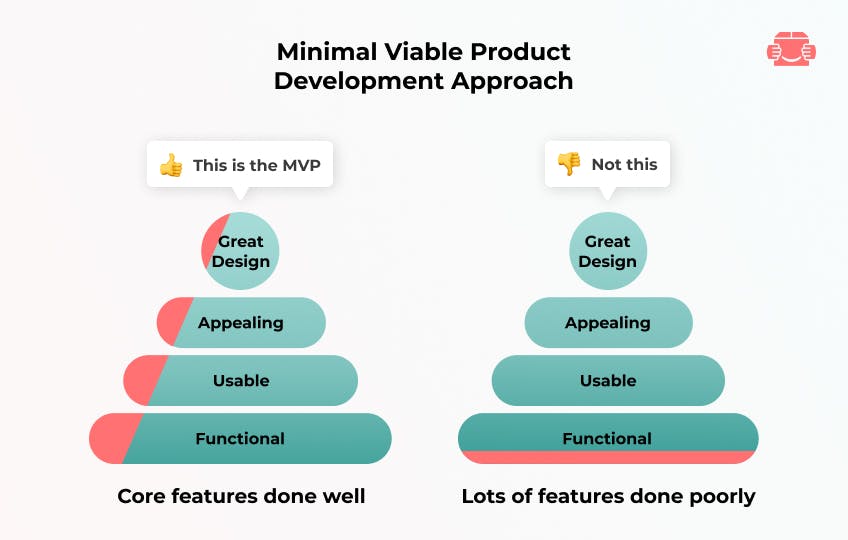
Trust Voypost to Launch Your MVP
Do you require assistance in launching the MVP for your app?
Voypost has over 10 years of MVP development experience and has more than 50 startup projects in the portfolio so far. Chances are, we've done what you need countless times in our other projects. We reuse our knowledge, and deliver every next project faster and better.
Voypost itself used to be a startup back in 2018. Since then, thanks to dozens of experiments we had launched to validate our assumptions, we managed to cut about 60% of redundant code, design a scalable MVP software architecture, and establish a rapid delivery process. This helped us to continuously deliver new features and continue experimenting to explore even better ways of software development for startups. Starting late 2019, we perfected our processes and successfully leveraged it to rapidly build and launch MVP in startups for other entrepreneurs.
We deliver beautiful, entertaining, informative mobile apps, which are highly rated by users worldwide. Contact us today to learn more about how we can help you!
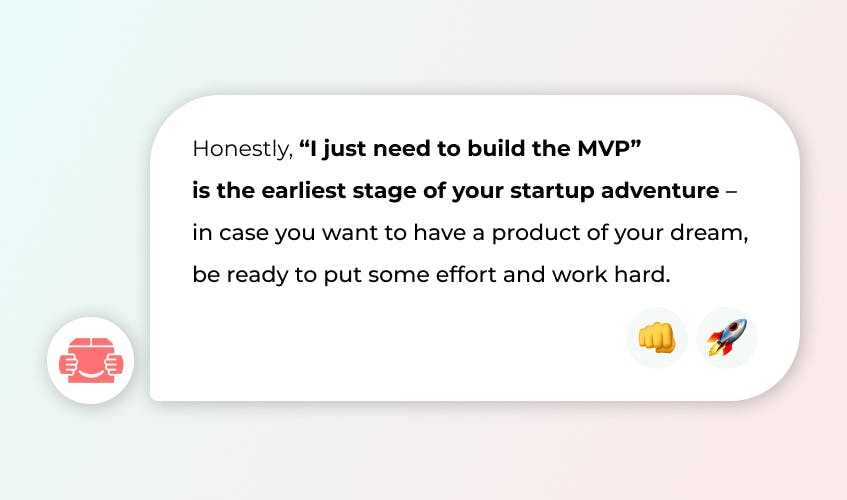
FAQ:
What should a Minimum Viable Product (MVP) include?
Generally speaking, an MVP should hold enough value for users to be willing to pay for it. The owner might establish other success criteria and ensure that there is a way to measure them.
What is the difference between a prototype and a Minimum Viable Product?
Prototypes are not marketable. They lack one or more features of a holistic product: fully functioning interface, layout, business logic, crucial third-party service integrations, etc.
How long should it take to build an MVP?
The MVP development time span heavily relies on the complexity of the product in question and the parameters of the team working on it (methodology, skill, size). It generally takes weeks to months to finish an average MVP.
What is the first step to build MVP?
Start with “Why”: define the problem the product aims to solve and ask yourself what is your motivation, personally, to address the said problem.
What are the success factors of the MVP?
Corresponds to a particular user demand.
The market currently lacks (or is going to lack) other products that address the said demand.
The team operates with realistic, achievable goals in development.
The team sets up communication with potential users at the earliest stages of development.
Finally, the mechanism to measure success must be in place.